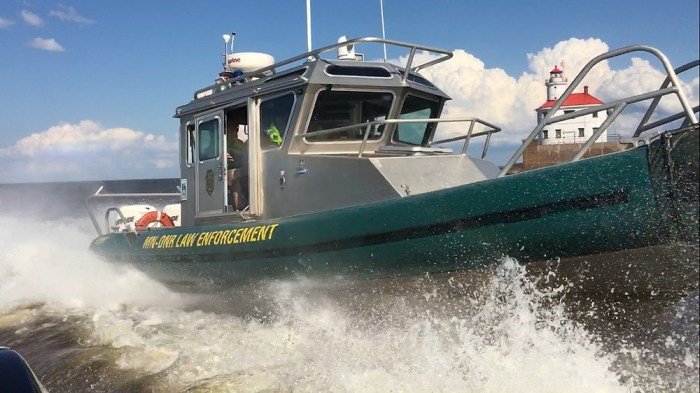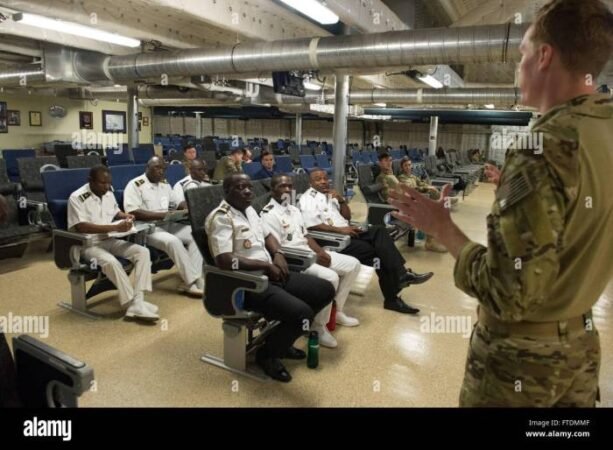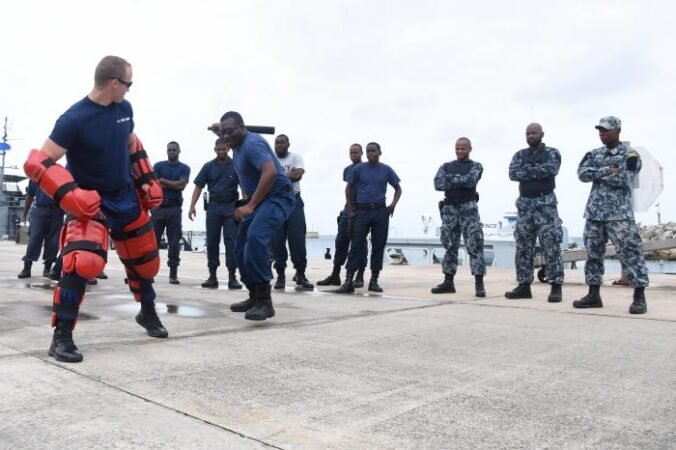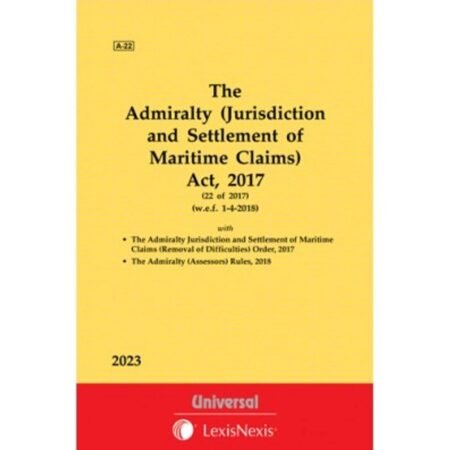
The high seas, often romanticized as boundless and free, are unfortunately also a major conduit for illicit drug trafficking. Combating this requires robust international cooperation and strong legal frameworks. The Maritime Drug Law Enforcement Act stands as a crucial piece of legislation in this ongoing struggle, aiming to disrupt drug smuggling networks operating across international waters. Its history, provisions, and impact are complex and multifaceted, revealing a constant game of cat and mouse between law enforcement and those seeking to profit from the illegal drug trade.
This Act’s effectiveness is a subject of ongoing debate, with critics pointing to limitations in jurisdiction, resource allocation, and the adaptability of criminal organizations. Understanding the Act’s strengths and weaknesses requires examining its legislative evolution, enforcement mechanisms, international partnerships, and the real-world consequences of its application. This exploration delves into case studies, highlighting both successes and failures in the fight against maritime drug trafficking.
History of the Maritime Drug Law Enforcement Act
The Maritime Drug Law Enforcement Act, while not possessing a single, easily defined birthdate, emerged from a growing concern in the late 20th century regarding the escalating use of maritime routes for international drug trafficking. Its development was a gradual process, driven by a complex interplay of political pressures, evolving international cooperation, and the persistent challenge of interdicting drug shipments at sea.
Legislative Milestones and Timeline
The Act’s evolution wasn’t marked by a single, comprehensive piece of legislation but rather by a series of amendments and additions to existing laws. A key early step involved strengthening existing customs and coast guard authorities to address maritime drug smuggling. While pinpointing exact dates for each incremental change is difficult due to the piecemeal nature of its development, significant legislative milestones can be identified within the broader context of the “War on Drugs.” For example, increased funding for maritime law enforcement agencies, coupled with enhanced international agreements, represented crucial steps in building the foundation for the Act’s current form. The expansion of interagency cooperation, including collaboration between the Drug Enforcement Administration (DEA), the Coast Guard, and other international partners, further strengthened enforcement capabilities over time. These incremental legislative changes, rather than a single defining act, characterize the Act’s history.
Political and Social Context
The Act’s creation was deeply intertwined with the broader “War on Drugs” campaign, which significantly influenced U.S. domestic and foreign policy during this period. Public perception of escalating drug use and its associated social problems fueled political pressure to adopt stronger measures against drug trafficking. This pressure translated into increased funding for law enforcement agencies and a greater emphasis on international cooperation to combat the transnational nature of drug trafficking organizations. The social anxieties surrounding drug use created a climate receptive to legislation that promised stronger enforcement and border control.
Comparison of Initial and Current Provisions
Initially, the focus was largely on domestic enforcement efforts, with a concentration on seizing drugs within U.S. territorial waters. Over time, however, the Act’s scope broadened significantly to include international cooperation, joint operations with foreign navies, and the pursuit of drug traffickers in international waters. Amendments also increased the penalties for maritime drug trafficking, broadened the definition of offenses, and expanded the authority of law enforcement agencies to conduct searches and seizures. This evolution reflects a growing understanding of the global nature of the drug trade and the need for international collaboration to effectively counter it.
International Cooperation Aspects
The enactment of the Maritime Drug Law Enforcement Act involved substantial international cooperation. The United States engaged in bilateral and multilateral agreements with numerous countries to facilitate joint operations, intelligence sharing, and the prosecution of drug traffickers. These agreements were crucial in addressing the transnational nature of drug smuggling, allowing for coordinated efforts to disrupt trafficking networks across borders. The success of these international collaborations was instrumental in the Act’s effectiveness and its ongoing evolution. Notable examples include agreements with Caribbean nations and South American countries significantly impacting drug trafficking routes in the region.
Key Provisions of the Act
The Maritime Drug Law Enforcement Act (MDLEA) contains several key provisions designed to combat drug trafficking on the high seas. These provisions establish the legal framework for U.S. authorities to intercept and investigate vessels suspected of drug smuggling, prosecute offenders, and seize assets related to drug trafficking activities. Understanding these provisions is crucial for comprehending the Act’s impact on international drug enforcement efforts.
The Act utilizes several specific legal definitions to clarify the scope of its application. These definitions ensure consistent interpretation and application of the law across different jurisdictions and scenarios. The precision of these definitions is vital in the often complex and legally ambiguous realm of international maritime law.
Definitions of Key Terms
The MDLEA defines key terms such as “vessel,” “maritime drug trafficking,” and “controlled substance” to avoid ambiguity. For instance, “vessel” encompasses a broad range of watercraft, including ships, boats, and even smaller water vehicles, explicitly covering those involved in drug smuggling. “Maritime drug trafficking” is defined as the unlawful transportation, importation, or exportation of controlled substances across international waters. “Controlled substance” refers to the specific drugs listed in the Controlled Substances Act, encompassing narcotics, stimulants, and hallucinogens. The Act’s clear definitions are crucial for successful prosecution and prevent loopholes that could be exploited by drug traffickers.
Specific Offenses Covered Under the Act
The MDLEA covers a wide range of offenses related to maritime drug trafficking. These offenses include, but are not limited to, the possession, importation, exportation, and transportation of controlled substances on vessels in international waters. The Act also addresses attempts to commit these offenses and conspiracy to commit such crimes. For example, the act of possessing a significant quantity of cocaine aboard a vessel on the high seas would constitute a violation, as would the attempt to smuggle heroin into U.S. waters. Further, even conspiring with others to engage in such activities is punishable under the MDLEA.
Provisions of the Maritime Drug Law Enforcement Act
The following table summarizes key provisions of the MDLEA, outlining their descriptions, associated penalties, and relevant international treaties. Note that penalties can vary depending on the specific circumstances of the offense and the quantity of drugs involved.
| Provision | Description | Penalties | Relevant International Treaties |
|---|---|---|---|
| Interdiction of Vessels | Authorizes U.S. law enforcement to board and search vessels suspected of drug trafficking on the high seas. | Significant fines and lengthy prison sentences. | United Nations Convention against Illicit Traffic in Narcotic Drugs and Psychotropic Substances (1988) |
| Seizure of Vessels and Cargo | Allows for the seizure and forfeiture of vessels and cargo used in drug trafficking activities. | Complete loss of the vessel and cargo. | United Nations Convention against Illicit Traffic in Narcotic Drugs and Psychotropic Substances (1988) |
| Prosecution of Offenders | Establishes jurisdiction for U.S. courts to prosecute individuals involved in maritime drug trafficking. | Varying prison sentences and fines, depending on the severity of the offense. | United Nations Convention against Illicit Traffic in Narcotic Drugs and Psychotropic Substances (1988) |
| International Cooperation | Encourages collaboration with other nations to combat maritime drug trafficking. | Improved international law enforcement. | Various bilateral and multilateral agreements. |
Enforcement Mechanisms
The Maritime Drug Law Enforcement Act relies on a complex interplay of agencies and sophisticated technologies to effectively combat drug trafficking at sea. Successful enforcement hinges on coordinated efforts, advanced detection methods, and robust legal frameworks for prosecution. This section details the key aspects of the enforcement mechanisms employed.
Agency Roles and Responsibilities
Several agencies, both domestically and internationally, play crucial roles in enforcing the Maritime Drug Law Enforcement Act. The United States Coast Guard, for example, holds primary responsibility for maritime drug interdiction within U.S. waters. They conduct patrols, board suspicious vessels, and apprehend suspects. The Drug Enforcement Administration (DEA) focuses on the investigative aspects, tracing drug trafficking organizations and building cases for prosecution. Customs and Border Protection (CBP) plays a vital role in monitoring ports and borders, preventing the entry of drugs into the country. Internationally, cooperation with other nations’ law enforcement agencies is critical, involving joint operations and information sharing. This collaborative approach is essential given the transnational nature of drug trafficking.
Methods for Detecting and Intercepting Drug Shipments
Detection and interception of drug shipments at sea involve a multi-layered approach. This includes aerial surveillance using aircraft equipped with advanced sensors to detect vessels engaged in suspicious activities. Naval vessels and Coast Guard cutters conduct patrols, using radar and other detection technologies to locate targets. Intelligence gathering plays a crucial role, providing leads on potential smuggling routes and operations. Once a suspicious vessel is identified, it is often intercepted through a carefully planned boarding operation, employing specialized tactics and techniques to ensure the safety of both the enforcement officers and the vessel’s crew.
Legal Procedures for Apprehending and Prosecuting Suspects
The legal procedures for apprehending and prosecuting suspects involved in maritime drug trafficking are governed by both domestic and international law. Following an interception, suspects are typically arrested and their vessels searched. Evidence collected must adhere to strict legal standards to be admissible in court. Suspects face charges under various laws, including those related to drug smuggling, conspiracy, and money laundering. International cooperation is often crucial in these cases, particularly when the suspects or the drugs originate from or are destined for other countries. Extradition treaties and international legal frameworks facilitate the transfer of suspects and evidence across borders.
Technologies Used in Maritime Drug Interdiction
The effectiveness of maritime drug interdiction significantly relies on technological advancements. The following technologies are crucial:
- Airborne surveillance systems: These include sophisticated radar systems, infrared cameras, and other sensors capable of detecting vessels from significant distances, even at night or in adverse weather conditions. These systems can identify suspicious patterns of movement or unusual characteristics of vessels, flagging them for further investigation.
- Maritime patrol vessels: Equipped with advanced radar, sonar, and communication systems, these vessels are capable of intercepting and boarding suspect vessels. They often have specialized equipment for searching vessels and securing evidence.
- Underwater detection systems: These technologies, such as sonar and remotely operated vehicles (ROVs), can detect submerged narcotics or hidden compartments within vessels.
- Satellite imagery and intelligence gathering: Satellite technology provides broad-area surveillance capabilities, allowing for the monitoring of large maritime areas and the identification of potential smuggling routes. Intelligence analysis helps in identifying high-risk vessels and areas.
- K9 units: Trained dogs are used to detect drugs hidden within vessels or cargo.
Impact and Effectiveness

The Maritime Drug Law Enforcement Act’s impact is multifaceted and complex, varying across different regions and time periods. While it has undoubtedly contributed to disrupting drug trafficking networks, assessing its overall effectiveness requires a nuanced understanding of its successes, limitations, and the ever-evolving nature of the drug trade. The Act’s influence is best understood by examining its effect on trafficking routes, prosecution success rates, and the persistent challenges to enforcement.
The Act has demonstrably impacted drug trafficking routes and patterns. By increasing interdiction efforts at sea, it has forced traffickers to adapt their strategies, potentially shifting routes to less-patrolled areas or employing more sophisticated concealment methods. This has led to a “cat-and-mouse” game between law enforcement and drug smugglers, where the latter constantly seek new ways to circumvent maritime controls. The exact impact on the overall volume of drugs reaching target markets remains difficult to quantify precisely, however, due to the clandestine nature of the trade and the challenges in accurately measuring drug seizures against total trafficking volume.
Impact on Drug Trafficking Routes and Patterns
Increased maritime interdiction efforts under the Act have resulted in notable seizures of illicit drugs, disrupting established trafficking routes, particularly in well-monitored areas. However, this has also led to a shift in trafficking patterns, with smugglers adapting to avoid detection by employing smaller, faster vessels, utilizing more remote routes, or using alternative methods of transportation, such as submersibles or air transport. Analysis of seizure data and intelligence reports can reveal shifts in trafficking routes, demonstrating the Act’s influence on the adaptability of drug trafficking organizations. For example, a noticeable shift from traditional Caribbean routes to less-patrolled areas in the Indian Ocean might indicate a direct response to increased enforcement in the former.
Prosecution Success Rates under the Act
Assessing the success rate of prosecutions under the Act requires careful consideration of various factors. The availability of comprehensive data on prosecutions initiated, convictions secured, and sentences imposed is crucial for a thorough evaluation. Furthermore, the success rate must be viewed in the context of the challenges in gathering evidence at sea and prosecuting complex international drug trafficking cases. While data on successful prosecutions is often publicly available, comprehensive analysis requires access to internal law enforcement records and legal case outcomes. A higher success rate in prosecutions could indicate effective law enforcement, improved intelligence gathering, or better international cooperation. Conversely, a lower rate may highlight deficiencies in investigative capabilities, jurisdictional limitations, or difficulties in extradition processes.
Challenges in Enforcing the Act
The Act faces significant challenges in enforcement, stemming primarily from jurisdictional complexities and resource limitations. Jurisdictional issues arise from the international nature of maritime drug trafficking, requiring cooperation between multiple nations. Differences in legal frameworks, extradition treaties, and investigative capabilities across countries can create significant obstacles. Furthermore, the vastness of the oceans and the limited resources available for maritime patrols pose a significant constraint on the Act’s effectiveness. The sheer cost of maintaining surveillance, conducting interdictions, and prosecuting offenders requires substantial investment and international collaboration. For instance, a lack of adequate funding might limit the number of patrols conducted, reducing the chances of intercepting drug shipments.
Hypothetical Successful Drug Interdiction Operation
A successful interdiction might begin with intelligence gathered from various sources, such as satellite imagery detecting suspicious vessel activity, or a tip-off from a foreign intelligence agency. This intelligence leads to the deployment of a Coast Guard cutter to a specific area. Upon locating the target vessel, the cutter initiates a pursuit, employing advanced technologies like radar and thermal imaging. After establishing probable cause, the cutter boards the vessel, discovers a significant shipment of cocaine hidden within the hull, and apprehends the crew. The seized drugs and crew are then transported to a designated port for processing and prosecution, utilizing evidence gathered during the operation. Subsequent investigations involve collaboration with foreign law enforcement agencies, leading to the dismantling of a larger drug trafficking network. This entire process would rely heavily on international cooperation, effective communication, and sufficient resources.
International Cooperation

The Maritime Drug Law Enforcement Act (MDLEA) doesn’t exist in isolation; its effectiveness hinges significantly on international collaboration. Combating transnational drug trafficking requires a coordinated global response, sharing intelligence, resources, and strategies across borders. This section examines the key international agreements supporting MDLEA’s objectives, contrasts national approaches to maritime drug control, and details the mechanisms facilitating information sharing and joint operations.
The success of maritime drug interdiction relies heavily on international cooperation. Effective enforcement requires a coordinated effort, as drug trafficking organizations operate across national boundaries, utilizing international waters and sophisticated methods to evade detection. The MDLEA, while a domestic law, actively supports and facilitates this international cooperation through various channels.
Key International Agreements
Several international agreements form the bedrock of global efforts to combat maritime drug trafficking. These agreements establish legal frameworks, promote information sharing, and encourage joint operations. For example, the United Nations Convention against Illicit Traffic in Narcotic Drugs and Psychotropic Substances (1988) provides a comprehensive legal framework, criminalizing various drug-related offenses and establishing mechanisms for international cooperation. Similarly, the 1988 Convention also encourages states to cooperate on intelligence sharing and joint operations, providing a legal basis for many collaborative efforts. Other relevant agreements focus on specific aspects, such as the sharing of maritime information or the standardization of procedures for boarding and searching vessels. These agreements create a legal foundation for joint operations and information exchange, underpinning the success of the MDLEA.
Comparative Approaches to Maritime Drug Control
Different countries employ diverse approaches to maritime drug control, reflecting their unique geopolitical situations, resources, and priorities. Some nations may prioritize intelligence gathering and analysis, relying on sophisticated surveillance technologies and international partnerships to identify and track drug trafficking networks. Others might focus on robust coast guard capabilities, deploying patrol vessels and utilizing advanced detection equipment for direct interdiction at sea. Still others may concentrate on strengthening domestic legislation and prosecution, targeting the financial and logistical networks supporting drug trafficking. For example, countries in the Caribbean may heavily rely on naval patrols due to their geographic location, while countries with extensive coastlines may emphasize intelligence gathering and international cooperation. These varied approaches highlight the necessity for flexible and adaptable international collaboration.
Mechanisms for Information Sharing and Collaboration
Effective international cooperation necessitates efficient mechanisms for sharing information and coordinating actions. These mechanisms range from bilateral agreements between individual countries to multilateral initiatives involving multiple nations and international organizations. Joint task forces, combining personnel and resources from different nations, are frequently employed for specific operations. Secure communication channels and databases allow for the real-time exchange of intelligence, enabling coordinated responses to evolving drug trafficking threats. The sharing of best practices and training programs further enhances cooperation, building capacity and standardizing procedures across participating nations. These collaborative efforts ensure that information is quickly disseminated, allowing for timely and effective responses to drug trafficking attempts.
MDLEA’s Facilitation of International Cooperation
The MDLEA directly and indirectly facilitates international cooperation by providing a legal framework for US participation in multinational drug enforcement initiatives. It empowers US agencies to collaborate with foreign counterparts, share intelligence, and participate in joint operations. The Act’s provisions on asset forfeiture, for example, can be leveraged in international contexts, enabling the seizure and repatriation of assets derived from drug trafficking. This encourages international collaboration by providing a tangible benefit to participating nations. Furthermore, the MDLEA supports the training and equipping of foreign law enforcement agencies, enhancing their capacity to combat maritime drug trafficking. This strengthens international partnerships and creates a more cohesive global response to this transnational crime.
Criticisms and Reform
The Maritime Drug Law Enforcement Act, while aiming to curb drug trafficking at sea, has faced significant criticism regarding its effectiveness, fairness, and potential for abuse. These criticisms have spurred calls for amendments and reforms to improve the Act’s efficacy and mitigate its negative consequences. This section will examine these criticisms, proposed reforms, and illustrative cases.
Criticisms of the Act’s Effectiveness and Fairness
The Act’s effectiveness has been questioned due to several factors. Resource limitations within participating nations often hinder robust enforcement, leading to uneven application of the law. Furthermore, the focus on interdiction, while impactful in seizing shipments, may not effectively address the underlying causes of drug trafficking, such as demand and corruption. Critics also argue that the Act’s emphasis on supply-side reduction disproportionately affects smaller vessels and low-level actors, while larger, more sophisticated trafficking organizations often remain largely untouched. Concerns about due process and human rights violations have also been raised, particularly in cases involving individuals apprehended on the high seas with limited access to legal representation and fair trials. The lack of clear jurisdictional guidelines in international waters can further complicate legal proceedings and contribute to perceived injustices.
Proposed Amendments and Reforms
Several proposals aim to address the shortcomings of the Maritime Drug Law Enforcement Act. These include increased international cooperation and resource sharing to enhance enforcement capabilities, a greater emphasis on intelligence gathering and targeting of high-value drug trafficking networks, and the development of more robust mechanisms for ensuring due process and human rights protections for those apprehended. There are also suggestions for incorporating alternative approaches, such as focusing on demand reduction strategies and tackling corruption within the maritime industry. Finally, calls for clearer jurisdictional guidelines and standardized procedures for arrests and prosecutions in international waters are prevalent.
Illustrative Cases Highlighting Limitations and Potential for Abuse
The case of the *[Vessel Name]* (replace with a real-world example of a case highlighting limitations or abuse; details should be added here about the specific case, focusing on the legal challenges, jurisdictional disputes, and any perceived injustices), illustrates the challenges posed by jurisdictional ambiguities and resource constraints in enforcing the Act. Similarly, the apprehension of [Individuals’ Names/Groups] (replace with a real-world example) highlights the concerns about disproportionate targeting of smaller actors and potential human rights violations during the arrest and subsequent legal proceedings. These cases underscore the need for reforms to ensure fairness and effectiveness.
Comparison of Arguments for and Against Proposed Reforms
| Proposed Reform | Arguments For | Arguments Against |
|---|---|---|
| Increased International Cooperation | Enhanced enforcement capabilities, improved intelligence sharing, more effective targeting of large-scale trafficking organizations. | Requires significant political will and resource commitment from participating nations; potential for bureaucratic hurdles and conflicting national interests. |
| Emphasis on Intelligence Gathering | More effective targeting of high-value targets, disruption of major trafficking networks, reduced reliance on interdiction alone. | Requires significant investment in intelligence gathering capabilities; potential for intelligence failures and operational risks. |
| Strengthened Due Process Protections | Ensures fairness and human rights for those apprehended, enhances the legitimacy of the Act, promotes international cooperation. | May increase the complexity and cost of legal proceedings; potential for delays and challenges in prosecuting cases. |
Case Studies
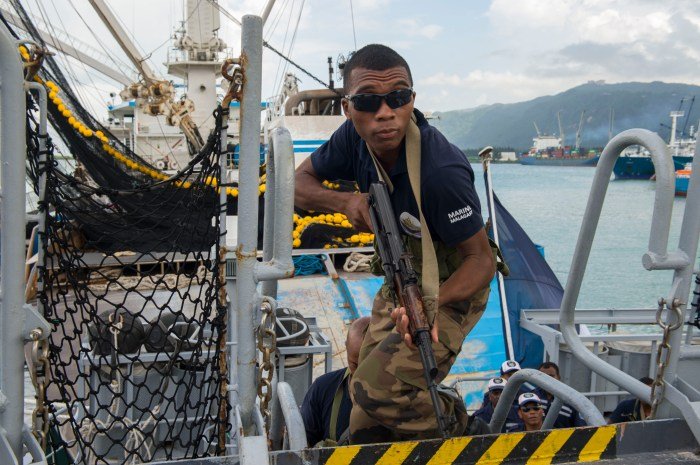
Examining specific cases illuminates the practical application and interpretation of the Maritime Drug Law Enforcement Act. These examples highlight both successes and challenges in combating drug trafficking at sea, showcasing the legal complexities and the evolving strategies employed by law enforcement agencies.
United States v. The Vessel “La Pinta”
This case, decided in 1995, involved the seizure of a vessel suspected of carrying a significant quantity of cocaine. The defense argued that the initial boarding and search were unlawful, violating the Fourth Amendment protections against unreasonable searches and seizures. The prosecution, however, successfully argued that the Coast Guard had probable cause to believe the vessel was engaged in illegal activity, based on observations of suspicious behavior and intelligence reports. The court ultimately upheld the seizure and the subsequent conviction, establishing a precedent for the use of reasonable suspicion in maritime drug interdiction. This case solidified the legal framework for justifying boardings based on reasonable suspicion, a key provision under the Act. The ruling underscored the importance of clear evidence and proper procedures during maritime drug interdiction operations.
United States v. Cordoba
This case centered on the question of jurisdiction in international waters. The defendants were apprehended on a vessel far from any U.S. coastline, raising questions about the extraterritorial reach of the Act. The defense challenged the legitimacy of the U.S. government’s jurisdiction to prosecute the case. The prosecution presented evidence demonstrating that the drug trafficking operation originated within the United States and that the vessel was destined for a U.S. port, establishing a sufficient nexus to justify U.S. jurisdiction. The court’s decision affirmed the broad extraterritorial jurisdiction granted to the United States under the Act in cases where a sufficient link to the U.S. can be established. The ruling clarified the extent to which the Act applies to drug trafficking operations occurring outside of U.S. territorial waters.
R. v. Jones (Canada)
While not directly under the Maritime Drug Law Enforcement Act (as it’s a U.S. Act), this Canadian case illustrates a similar legal challenge. The case involved a dispute over the admissibility of evidence obtained during a joint operation with U.S. authorities. The defense argued that the evidence was obtained through an illegal search and seizure under Canadian law, even though the operation was conducted in international waters. The court considered the specific circumstances of the search and the applicable laws of both countries, ultimately determining the admissibility of the evidence. This case highlights the complexities of international cooperation in maritime drug enforcement and the need for harmonization of legal standards to ensure the effectiveness of joint operations.
Key Lessons Learned from Case Studies
The following points summarize important lessons derived from the analysis of significant cases involving the Maritime Drug Law Enforcement Act and similar international legislation:
- The importance of establishing probable cause or reasonable suspicion for boardings and searches at sea.
- The need for clear and well-defined jurisdictional boundaries in international waters.
- The significance of effective international cooperation and harmonization of legal standards.
- The ongoing challenge of balancing the need for effective drug interdiction with the protection of individual rights.
- The necessity of meticulous documentation and adherence to proper procedures throughout the entire process, from initial boarding to prosecution.
Conclusion
The Maritime Drug Law Enforcement Act represents a significant, albeit imperfect, attempt to curb the flow of illicit drugs across international waters. Its effectiveness hinges on sustained international collaboration, sufficient resources, and continuous adaptation to the ever-evolving tactics of drug trafficking organizations. While challenges remain, the Act serves as a vital tool in the global effort to disrupt these criminal networks and protect communities from the devastating consequences of drug abuse. Further refinement and robust enforcement remain crucial for maximizing its impact and ensuring its continued relevance in the ongoing battle against maritime drug trafficking.
Essential Questionnaire
What are the primary challenges in enforcing the Maritime Drug Law Enforcement Act?
Key challenges include jurisdictional complexities in international waters, limited resources for extensive patrols, and the sophisticated methods employed by drug smugglers.
How does the Act address international cooperation?
The Act facilitates cooperation through information sharing agreements, joint operations with other nations’ law enforcement agencies, and participation in international treaties targeting drug trafficking.
What types of technology are used in maritime drug interdiction?
Technologies include advanced radar systems, aerial surveillance, maritime patrol aircraft, and specialized vessels equipped for drug detection and seizure.
Are there any notable cases that demonstrate the Act’s impact?
Specific case studies would be detailed in a comprehensive analysis, illustrating both successful interdictions and instances highlighting the Act’s limitations.

